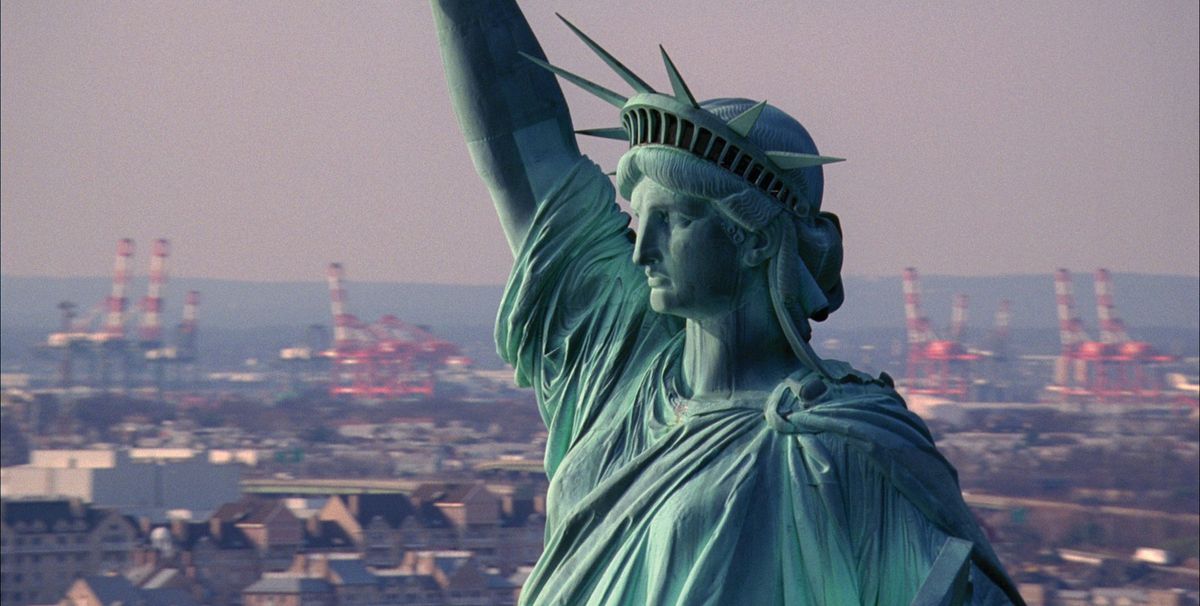The Statue of Liberty typically looks smaller than expected when seen from afar. But in the British-born artist Steve McQueen’s seven-minute video Static (2009), the monumental sculpture dominates the screen. “It is literally a close-up. You see every fold [of fabric] and rusty porthole. It becomes unfamiliar,” says Stuart Comer, the chief curator of media and performance art at the Museum of Modern Art (MoMA) in New York, who has worked with the artist on an unusual presentation of the New York institution’s recent acquisition.
The camera’s jerky movement, plus the sound of whirring helicopter blades and high wind, creates a sense of unease. The drama will be enhanced when the work is projected on to a 9ft-tall, double-sided screen in the museum’s atrium throughout the summer (from 6 May). McQueen’s meditation on the statue was shot from a helicopter continuously circling the symbol of freedom and democracy, which famously offered hope to millions of new arrivals as they headed to Ellis Island.
Filmed to coincide with the monument’s re-opening, eight years after it closed to the public following the September 11 attacks, Comer says: “This is not a Hollywood film; it’s far too open-ended.” That said, he expects it to generate debate. Meanwhile, in Milan, Static went on view last month in the exhibition The Restless Earth (until 28 August), where it is the final work in a show about perceptions of migrants and refugees. The exhibition has been organised for the Fondazione Nicola Trussardi by the artistic director of New York’s New Museum, Massimiliano Gioni, who says that McQueen’s film is “like a forensic investigation, a kind of indictment of a certain idea of democracy and freedom that we should have embraced and that, of course, needs to be reworked every time”.


